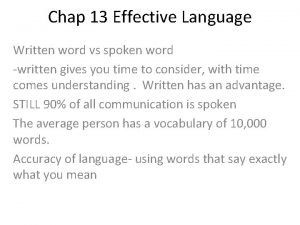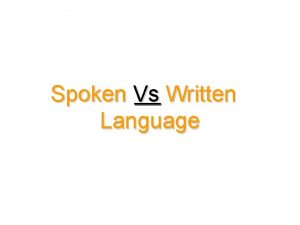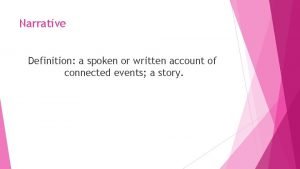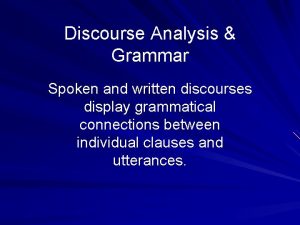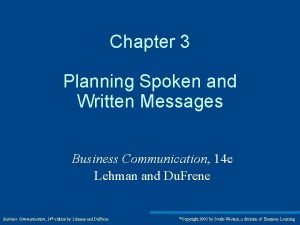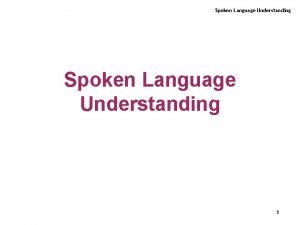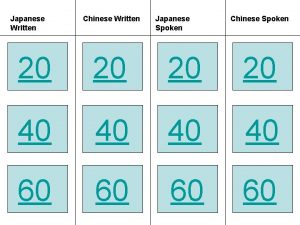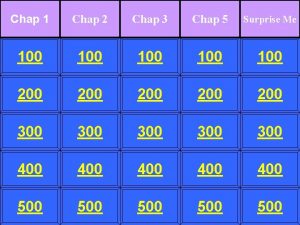Chap 13 Effective Language Written word vs spoken





- Slides: 5

Chap 13 Effective Language Written word vs spoken word -written gives you time to consider, with time comes understanding. Written has an advantage. STILL 90% of all communication is spoken The average person has a vocabulary of 10, 000 words. Accuracy of language- using words that say exactly what you mean

Continue chap 13 • Concrete words- name things that we can perceive through sight, hearing, touch, taste, and smell (baseball, car, radio) • Abstract words- names for qualities, attributes, concepts (sports, transportation, media) • Denotation- the basic meaning of the word. Easily found in the dictionary. • Connotation- meaning of the word that goes beyond the dictionary definition. The meaning we associate with the word. • Imagery- language that creates pictures in our minds and excites our senses • Metaphor- figure of speech, NOT using the word ‘like’ or ‘as’ that compares two usually unrelated things • Simile- compares two usually unrelated things USING ‘like’ or ‘as’ • Allusion- reference to a well known person, place, thing or idea • Antithesis=- balances or contrasts a term against its opposite (youngveteran, old-youth)

Continue chap 13 • Oxymoron- places opposite terms side by side. • Irony- implies the opposite of what seems to be said on the surface. Exaggeration Imagery • Exaggerate- make something greater than it actually is • Hyperbole- make more of something , overstatement • Understatement- makes less of something • Personification- giving human characteristics to nonhuman things

Continue chap 13 Music with words • Alliteration- repetition of the initial sound of two or more words that are close together. “Parents provide their children with the power to succeed. ” • Assonance- the repetition of vowel sounds • Consonance- the repetition of consonant sounds Repeating words or group of words Parallel Structure • Parallelism- using the same grammatical form to express ideas that should, logically, be treated equally. Usually involves repetition of words or phrases. – We can not dedicate, we can not consecrate, we can not hallow this ground – I have a dream that one day….

Language to AVOID • Jargon/slang- non standard words that may also be associated with certain groups, often considered unintelligible to most of the general public ex: ‘Merica, irritainment • Sexist language- unfairly groups women or men into stereotyped categories. ex: THEY are not as strong or are not strong enough leaders to hold those positions, mankind, fatherland, spokesman, congressman, manhours • Shocking or obscene language- any language that offends by going against common standards of decency, any derogatory term ex: “Hello Morons”
